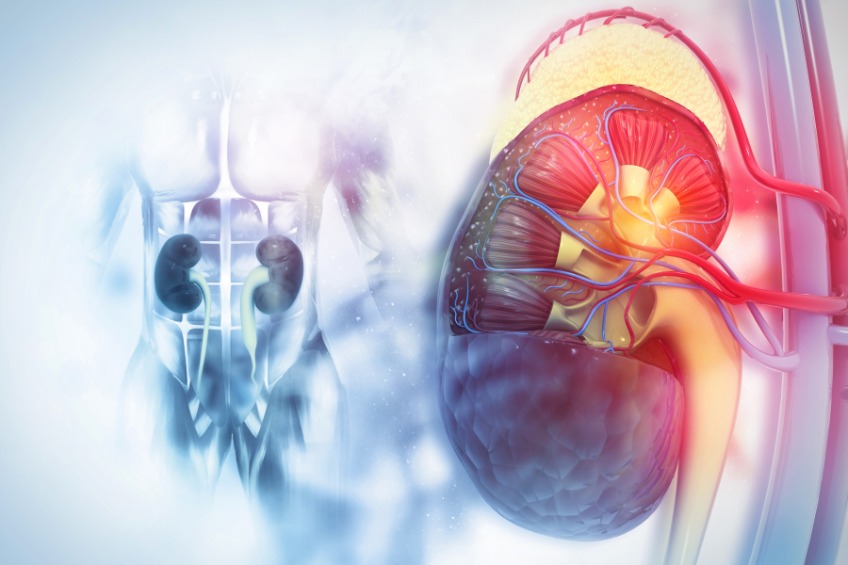Background CKD & Diabetes
Diabetes is a common disease in the United States, affecting more than 37 million Americans according to the Centers for Disease Control and Prevention (CDC). There are two different types of diabetes, Type 1 and Type 2. Type 1 diabetes is when your pancreas does not make insulin at all or only makes a little insulin. Insulin helps your body move sugar from the blood into your cells to use for energy. Type 1 diabetes is less common and often occurs at an early age. Type 2 diabetes is the more common of the two and accounts for about 90-95% of cases. Type 2 diabetes occurs when your body does not respond well to its own insulin and does not bring sugar out of the blood and into the cells for energy like it should. When the sugar in your body stays in the bloodstream, it leads to high sugar levels. It is important to control high blood sugar because it can cause problems over time, like vision changes, nerve pain, kidney damage, or even heart attacks to name a few. According to the CDC, 1 in 3 adults with diabetes has chronic kidney disease (CKD). Controlling blood sugar can help reduce kidney problems, but there are also some medications that can slow the progression of kidney disease in diabetes.
Also see our blog on reducing your risk of diabetes
Kerendia (Finerenone)
Kerendia (finerenone) is a medication that was approved by the FDA in 2021 for the indication of reducing the risk of sustained kidney function decline, end-stage renal disease, cardiovascular death, heart attacks, and hospitalization for heart failure in adults with type 2 diabetes and CKD. In short, it was shown to slow the progression of CKD in adults with Type 2 Diabetes. Kerendia is part of a drug class called aldosterone antagonists (or mineralcorticoid receptor antagonists). It works for diabetes and CKD by blocking a mineralcorticoid receptor from becoming over activated, which is thought to contribute to inflammation and fibrosis in the kidneys. Kerendia is taken as one tablet once daily. The tablets come in either 10 or 20mg. The dose for each person is determined by their kidney function and your potassium levels. The ideal dose is to reach 20mg if appropriate. The medication can be taken with or without food. The most common side effects in trials were increased potassium, low sodium, and low blood pressure. Kerendia should not be taken by patients with adrenal insufficiency or who take concomitant medications that are strong CYP3A4 inhibitors. If you’re not sure whether your medications would interact with Kerendia, ask your doctor or pharmacist. You also should avoid grapefruit or grapefruit juice while taking Kerendia. Kerendia has not been studied in pregnancy or in children under the age of 18.
See our blog about bio-similar insulin here
Kerendia demonstrated the ability to help slow the loss of kidney function and reduce the risk of kidney failure in a large clinical study. In the same study, it also reduced the risk of heart attacks, cardiovascular death, and hospitalization for heart failure. Kerendia does not replace your diabetes or blood pressure medications but would be an additional medication to help protect your kidneys. If you think Kerendia could help you reach your health goals, talk with your physician.
Resources:
1) https://www.kerendia-us.com/
2) https://www.cdc.gov/diabetes/managing/diabetes-kidney-disease.html#:~:text=CKD%20is%20common%20in%20people,diabetes%20can%20cause%20kidney%20disease.&text=Kidney%20diseases%20are%20the%209th,death%20in%20the%20United%20States.












